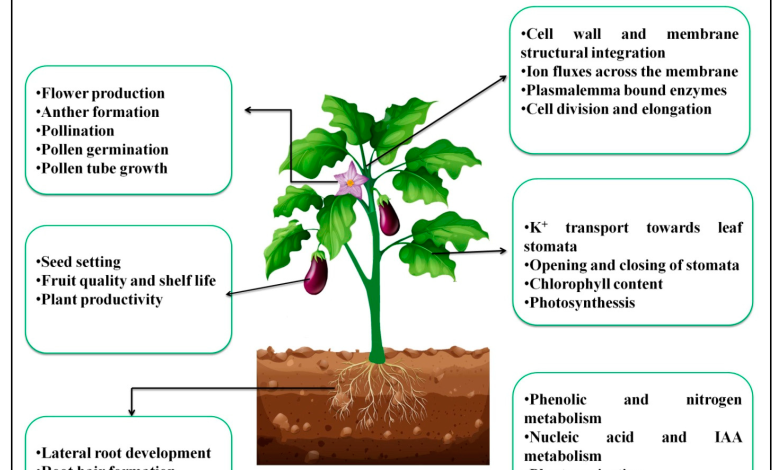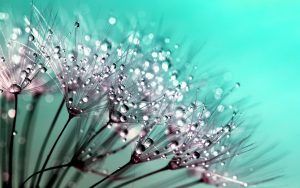Boron in Plants: [Use, Advantages and Application]

Boron is one of the micronutrients that plants need for optimal growth throughout their lives.
It is present in the substrate at appropriate levels for the roots to absorb it, since in general it does not need much.
What is possible is that an excessive deficiency of this element generates some damage to crops, so knowing it has become essential.
And to help you on this whole topic, here is the most important information you will need to know about boron.
What is boron?
Boron is a chemical element present in the periodic table of elements with the symbol B.
It is found in nature in low quantities, which is often enough to allow crops to flourish normally.
However, the lack of knowledge regarding the role that this micronutrient plays in crops prevents it from being given the necessary attention.
And yes, it is a point that should be considered carefully because various studies have shown that boron deficiency is the most common deficiency in the field of micronutrients.
Why is boron important in plant growth?
Boron plays a critical role in a diverse range of plant functions, including cell wall formation and stability, maintenance of structural and functional integrity of biological membranes, movement of sugar or energy to growing parts of plants, and pollination and seed setting.
What factors influence crop response to boron fertilization?
 Boron in the soil needs to be dissolved so it can be taken up by plants.
Boron in the soil needs to be dissolved so it can be taken up by plants.
This means that the level of boron that exists in it is not an exact indicator of the amount that plants have available to them.
In addition, the lack of irrigation negatively influences the correct absorption because it is a passive element that needs water to move.
As for the plant.
What is the boron content in the soil?
Boron occurs naturally in the environment and soil typically contains a level of 10 ppm.
What benefits can boron-rich soil have?
A soil rich in boron will be able to offer the plant the level of support it needs to carry out the internal processes where it is involved.
The cell walls contain the largest amount of boron in the entire plant and they do so because it is directly involved in cell division.
This means that boron is an essential element for the creation of cells that will give rise to new plants.
This intervention is noticeable, above all, at the moment when the plant begins the pollination process and, later, during flowering and fruiting.
Other contributions that a good amount of boron gives in the soil are summarized here:
- Helps metabolize nitrogen.
- It facilitates the transport of potassium so that the correct levels of water are regulated in each part of the plant.
- It works directly with the transport of sugars, which prevents the formation of fungi in the roots.
- Contributes to the formation of a certain amount of protein.
- Provides support in the regularization of hormonal levels.
What disadvantages does an excess of boron have?
Detecting that a plant has an excess of boron in its structure is a complex job because it presents symptoms similar to excesses due to other nutrients.
- On older leaves, chlorotic or necrotic spots are seen that end up burning. Later, this necrosis progressively consumes the entire structure of the leaf until it ends up killing it, producing defoliation. This whole process on newer sheets will proceed much faster.
- To determine exactly if it is an excess of boron, it is best to carry out a soil and water study .
- Boron can be present in excess at soil pH below 5.5.
- In the case of water, a measurement above 0.5 ppm could reveal the cause of the problem. Counteracting the problem is possible with the application of fertilizers that have a high level of calcium.
This is because the calcium prevents the boron from becoming soluble in the substrate, rendering it unusable.
As a preventive measure, it is important to measure the levels of boron to be applied by fertilization processes, both to avoid deficits and excesses.
What crops benefit most from the presence of boron in the soil?
Among the main species that require a higher level of boron in their structure, salvia, pansies and petunias stand out.
This condition is more visible when sowing is carried out in nurseries or greenhouses where the space provided with substrate is smaller.
For example, in thought a lack of boron will show up as rosettes in the structure.
How do we detect deficiency or lack of boron in our crops?
Due to the importance of boron in plant cell division, its deficiency will directly affect flowering and fruiting.
- This will be seen in a decrease in the production of flowers, fruits and seeds and could even be noticed with deformities.
- It can also have some level of impact on the proper development of roots and foliage in general.
- The roots, in the first place, could look little extensive, with low amount of hairs and feeling brittle.
- In the case of foliage, it mainly affects new leaves, which can be seen thickening.
- If the boron deficiency manifests itself in the stems, they will be weak and brittle.
Boron is another of the most important micronutrients in crops and its correct application can be achieved with the administration of appropriate fertilizations.
An important fact to keep in mind is that the concentration range in the soil, which varies from 0.3 to 1 ppm, is the basis for producing a deficit or excess of it.
Therefore, it is important to be attentive to the conditions of the plants and take corrective measures in the event of any change in the structure.
How can we provide boron to plants?
Borax, boric acid, or solubor can be dissolved in water and sprayed or applied to the soil in a mixed dry fertilizer.
Excess boron is toxic to plants, so care must be taken to ensure the correct application rate and uniform coverage. Although boron can be sprayed on leaves, too much boron will cause plant damage.


![Photo of Lawn Mower: [The Best on the Market in 2021]](https://www.complete-gardening.com/wp-content/uploads/2022/08/lawn-mower-the-best-on-the-market-in-2021-390x220.png)
![Photo of Alocasia Amazonica: [Characteristics, Planting, Care, Irrigation]](https://www.complete-gardening.com/wp-content/uploads/2022/08/alocasia-amazonica-characteristics-planting-care-irrigation-390x220.jpg)
![Photo of Caring for a Bonsai: [Irrigation, Sun Exposure, Pruning and Fertilizer]](https://www.complete-gardening.com/wp-content/uploads/2022/08/caring-for-a-bonsai-irrigation-sun-exposure-pruning-and-fertilizer-390x220.jpg)